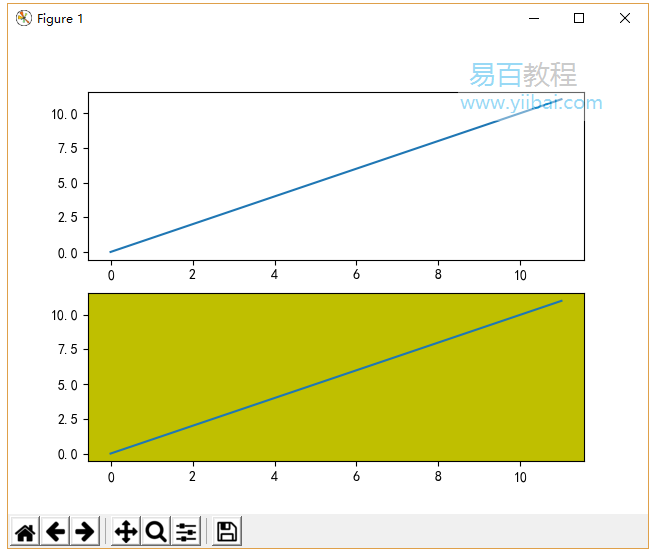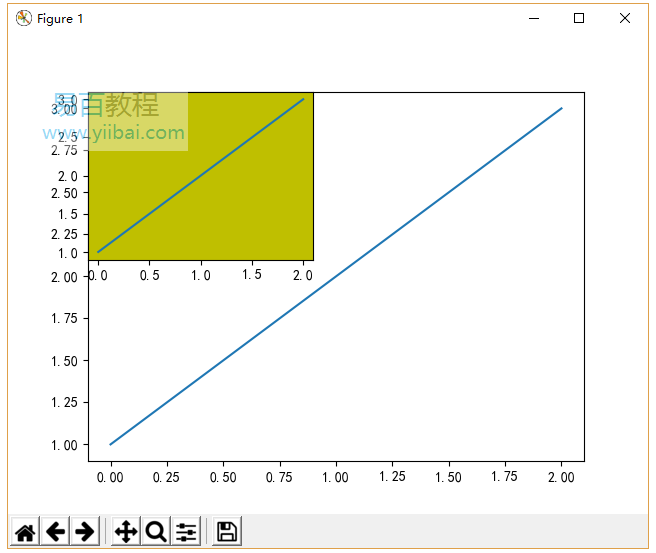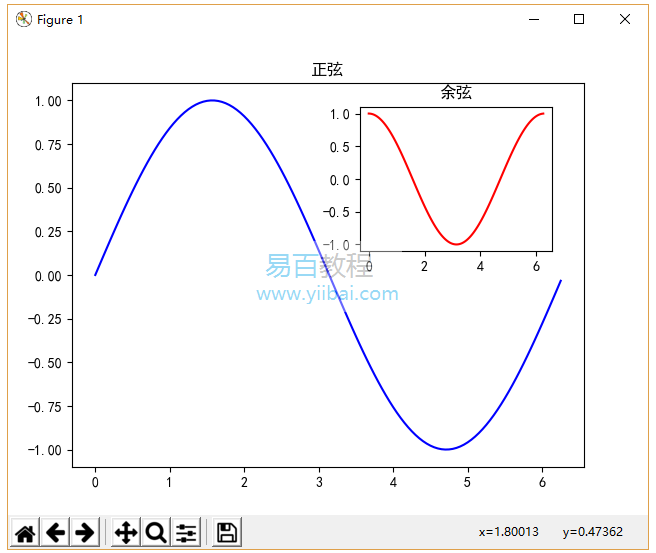Matplotlib Multiplots
在本章中,我們將學習如何在同一畫布上建立多個子圖。
subplot()函式返回給定網格位置的axes物件。此函式的簽名是 -
plt.subplot(subplot(nrows, ncols, index)
在當前圖中,該函式建立並返回一個Axes物件,在ncolsaxes的nrows網格的位置索引處。索引從1到nrows * ncols,以行主順序遞增。如果nrows,ncols和index都小於10。索引也可以作為單個,連線,三個數位給出。
例如,subplot(2, 3, 3)和subplot(233)都在當前圖形的右上角建立一個軸,占據圖形高度的一半和圖形寬度的三分之一。
建立子圖將刪除任何與其重疊的預先存在的子圖,而不是共用邊界。
參考以下範例程式碼:
#! /usr/bin/env python
#coding=utf-8
import matplotlib.pyplot as plt
# 顯示中文設定...
plt.rcParams['font.sans-serif'] = ['SimHei'] # 步驟一(替換sans-serif字型)
plt.rcParams['axes.unicode_minus'] = False # 步驟二(解決坐標軸負數的負號顯示問題)原文出自【易百教學】,商業轉載請聯絡作者獲得授權,非商業請保留原文連結
# plot a line, implicitly creating a subplot(111)
plt.plot([1,2,3])
# now create a subplot which represents the top plot of a grid with 2 rows and 1 column.
#Since this subplot will overlap the first, the plot (and its axes) previously created, will be removed
plt.subplot(211)
plt.plot(range(12))
plt.subplot(212, facecolor='y') # creates 2nd subplot with yellow background
plt.plot(range(12))
plt.show()
執行上面範例程式碼,得到以下結果:

figure類的add_subplot()函式不會覆蓋現有的圖,參考以下程式碼 -
#! /usr/bin/env python
#coding=utf-8
import matplotlib.pyplot as plt
# 顯示中文設定...
plt.rcParams['font.sans-serif'] = ['SimHei'] # 步驟一(替換sans-serif字型)
plt.rcParams['axes.unicode_minus'] = False # 步驟二(解決坐標軸負數的負號顯示問題)
fig = plt.figure()
ax1 = fig.add_subplot(111)
ax1.plot([1,2,3])
ax2 = fig.add_subplot(221, facecolor='y')
ax2.plot([1,2,3])
plt.show()
執行上面範例程式碼,得到以下結果:

可以通過在同一圖形畫布中新增另一個軸物件來在同一圖中新增插入圖。參考以下實現程式碼 -
#! /usr/bin/env python
#coding=utf-8
import matplotlib.pyplot as plt
import numpy as np
import math
# 顯示中文設定...
plt.rcParams['font.sans-serif'] = ['SimHei'] # 步驟一(替換sans-serif字型)
plt.rcParams['axes.unicode_minus'] = False # 步驟二(解決坐標軸負數的負號顯示問題)
x = np.arange(0, math.pi*2, 0.05)
fig=plt.figure()
axes1 = fig.add_axes([0.1, 0.1, 0.8, 0.8]) # main axes
axes2 = fig.add_axes([0.55, 0.55, 0.3, 0.3]) # inset axes
y = np.sin(x)
axes1.plot(x, y, 'b')
axes2.plot(x,np.cos(x),'r')
axes1.set_title('正弦')
axes2.set_title("餘弦")
plt.show()
執行上面範例程式碼,得到以下結果:
